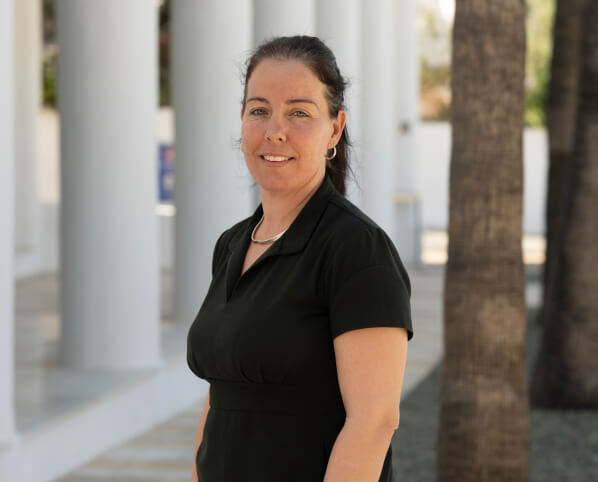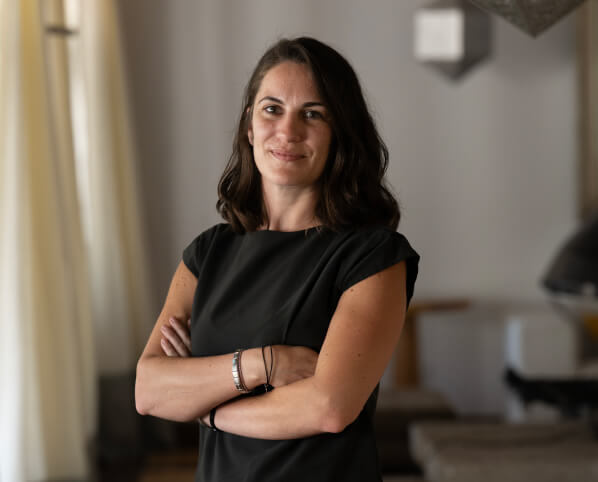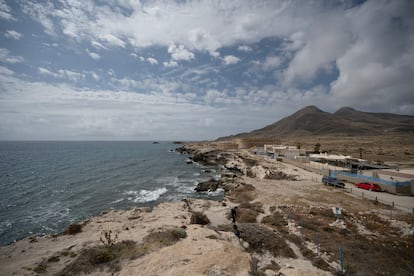The waiter’s instructions are accurate: Almería’s tomato, sweet and crispy – anywhere else is justified its fruit condition – does not need the dash of usual oil, it is enough to put a little salt (little) of the Cape of Gata; They serve in the Mojácar hostel. The waiter in question carries a sheet in which Juan González is read, is from Garrucha, from the town next door, where the red prawn comes from, another product that justifies a trip. The tomato – “If you want oil I bring it, but I recommend that you try it as is,” it insists – is from the RAF variety and arrives chopped into one of the tables overlooking the sea. This expansive Almeria incorporates in the character the 3,000 hours of sun per year and the 19 degrees on average that guarantee the tourist brochures of this coast. Conditions that are noted in the garden (on the plate); in the cyclist teams that train in the Sierra de Cabrera in winter; In the sea, because there are so many light days, octopus and congrios are more clearly seen when diving is practiced; And on the calendar, which is twisted and allows a bath in May or November.
Inside the hostel
Anterior
Following
The international client still predominates in the hostel until it is summer, when the Spaniards with the family, who repeat year after year, Tana Blázquez, the director, tells. “You see how children grow,” he says. Neither in May nor in August you have to get up early to plant the umbrella in the sand, says Blázquez. Almeria does not arrive so easily, there is no high speed, there is no airport, “it guarantees us more tranquility. Mojácar is a quiet town,” he says.
Wherever they come from, customers are going to enjoy the sea, “to have a relaxing experience,” he emphasizes in a living room in which to read, chat or ask someone for reception to put football on TV. The Almeria cuisine is another claim, some know it with ears, but all hallucinate when the dishes arrive: rice (the director warns of one that carries Torreznos), the red gamba of Garrucha (to which they dedicate a festival in October) and the tomato raf, which was introduced in Almeria in the sixties of the last century, where the conditions are given to reach 12 Brix degrees, a very high value on this sweet scale. The banana, pure sucrose, moves between 17 and 25 degrees.
Activities for all in a natural environment
Cultural visits, sustainable tourism, dynamization of the place …
How to get the most out of the area where the Mojácar Parador is located
The hostel, with an open pool from March to November and with the sea one step, is a place to not move. But this is not a resort Pulserite, here is, explores. Mojácar town is five minutes by car or bus. It is in a high, entirely, he has viewpoints to the Sierra de Cabrera, at the site of the pilas-mojácar la vieja, to the water river (it is not irony, is loaded) and the Mediterranean. On a one -hour ride he drinks from a fountain with 12 jets that call Mora, the city’s door is visited, with an arc rebuilt in the 16th century over the Arab original, the Plaza del Parterre and the Macael marble statue of Macael to the mojaquera woman, which carries a pitcher and wears a handkerchief.

The streets of Mojácar are a riddle, a escape room, Unless one goes with the guide Javier Rodríguez, Melillense, 25 years in the area, the palm of his hand. Know a rush – thermo with fresh water and a cap never plenty – that ends in a click covered with thickets. “They want to build a viewpoint here,” announces the guide. The sea looks very good, the ships are loaded with plaster extracted from the quarry of the sorbas, a visitable karst place; That afternoon also appeared a lonely sailboat, the one painted by the artists who sell paintings in the merchants of coastal villages. That is the memory.
Gold shovels
It rains so little in Almeria that if you do it for two days, people make crumbs at home, a celebration and a comfort. Not everything is sun and salt still. The house of the volcanoes, in Rodalquilar, is a geological museum inside, in a volcanic boiler, where you reach a road of cliffs from Mojácar. Pako Romero is responsible. Account that in summer they open from 18.30 to 21.30 for visitors to go after a beach day in the environment of Cabo de Gata. He explains how until 1966 gold was extracted from a reef: “Up to 400 or 450 grams per ton of rock. Then it went down to 3 or 4 grams and the mine closed,” he says.
The museum also acts as a point of information for which hiking wants to do, up to 16 routes are marked. They have a bar-cafeteria with mountain views and the already abandoned mineral treatment plant, although protected by heritage. It is an alternative to chiringuito, a way of knowing – in flip flops, no problem – how the people of the place were made, as in this town with artistic initiatives, an economy and a school were built to school the children of the miners. Whether inside or near the sea, the peculiarity of the landscape of Almeria, which keeps a great resemblance to desert areas of other continents, has served to roll films. From Lawrence de Arabia (1962), which was recorded in the Rambla de Otero, in taverns, to current productions that continue to choose this environment.
Ana, Carlos and Sara recommend

Bédar is in the Sierra, 20 kilometers from the hostel, but it’s like living in another world. It is quiet, fresh, green, even bamboo grows. He has wonderful views to Mojácar. There is a fountain with its ancient washingder.
Ana Belén Ruiz
Floor waitress 3 years in Paradores

The white marble quarries of Macael, in which this material is still extracted outdoors. It is exported to almost everyone. A school has been recently created to train new professionals and that this trade does not disappear.
Carlos Teruel
Reception Head 34 years in Paradores

The Cala de San Pedro, little and crystalline waters. There are hippies settlements that sell clothes, drink. Everything is very natural. It is reached from the beach of Las Negras by boat or walking in an hour, they are five kilometers.
Sara Martínez
Administrative officer 10 years in Paradores
Rodríguez, who in 2003 created the active tourism company Mojácar Sport Aventura, organizes hiking routes through this mining environment and the coast, where there are also formations of volcanic origin, such as the Playa del Monsul (by the way, by the way, a scene of Indiana Jones and the last crusade, 1989) or the sirens reef. It is not easy to choose a favorite enclave, know everything, also the shaman, a mythical disco (“Almería was very bohemia,” he recalls). Highlights the fossil dune of the sculles, which leads to the beach of the jetty. It is not necessary to bathe to enjoy the sea from the top of this elevation formed by the oolitos, spherical particles of calcium carbonate that cover the sand grains and are deposited. Erosion makes the rest: form oques, attracts visitors, photos, thoughts. “We do interpretive hiking,” summarizes the guide, which leads to the groups and gives them explanations, telling stories. The mobile in the pocket, without having to download a route, with a view to the front, asking questions if you want, Rodríguez da Palique.

The Almería climate, with its very high semi -arid areas and temperatures inside, causes car manufacturers to try their new models on coast and mountain roads, where they coincide with cyclist equipment. Carlos Teruel, the head of reception of the Parador, has attended workers in the car industry. “The results of the trials came out the same in the US desert as in Almería’s, so they decided to do the tests here,” he says. They evaluate the brakes, the suspension … Some carry pixelated panels, details, so that, if you take a photo, come out blurred and the competition cannot gather information.

The locals are the ones that prove the vehicles, they know the roads, it is an extra income, such as Rodríguez, the guide. The engineers stay in the hostel. They have come to work, of course, but there is time to try rice, prawns and raf tomato. The temptation to load the trunk of the car is large. Greater is to try it again in place.
Andalusia, in 16 hostels
Credits:
Drafting and script: Mariano godson
Editorial Coordination: Francis Pachá
Photograph: Alfonso Durán
Development: Rodolfo Eyes
Design: Juan Sánchez
Design Coordination: Adolfo Domenech





